Reviews
Robert Fuest
USA, 1971
Credits
Review by David Carter
Posted on 11 July 2011
Source MGM DVD
Related articles
Reviews
The Abominable Dr. Phibes by Matt
Categories Vincent Price
There is a tendency in critical analysis to view every aspect of a work as being the product of a conscious aesthetic or symbolic decision by its creator. Specious though the technique may be, applying it to the opening of Vincent Price’s seminal The Abominable Dr. Phibes yields some tantalizing results. A robed Phibes first appears seated at his massive, art-deco organ hammering out a virtuosic performance of a piece well-suited for a horror film. The work is Felix Mendelssohn’s “War March of the Priests,” an organ standard that originates from a Biblical play about a queen murdered by a man who had been hiding for years, patiently waiting to mete out divine punishment.
The origins and meaning of the piece go unremarked upon and have no bearing on the events of the film. The work is used simply to establish mood; an aural set-piece chosen for its sensory, rather than symbolic, qualities. The scene performs its function excellently, effectively establishing Phibes’ style of high gothic mingled with Technicolor modernism. Such visual and aural indulgences are Phibes’ hallmark and sensory engagement is the film’s primary and possibly only objective. Motive, logic, and realism are discarded in favor of the sumptuous visual, a methodical tempo, and the emotive power of Price’s eyes. It is an illogical film, filled with contradictions and anachronisms; to look for “meaning” in the individual parts is to miss the point. Scenes - and to a certain degree, the entire film - must be digested whole; each element empty save for what it contributes to the mise en scene. For these reasons, it is possible to view The Abominable Dr. Phibes as the quintessential horror film—a triumph of style over logic.
Existing in direct contradiction of the opulence of its visual components, the narrative of The Abominable Dr. Phibes is simple and straightforward. It is a revenge tale. Dr. Anton Phibes’ wife Victoria dies on the operating table while being attended by nine doctors. Phibes has an auto accident on his way to the hospital and is believed dead. Alive yet horribly disfigured, Phibes lives in secret for years plotting his elaborate revenge against the doctors who he blames for Victoria’s death.
Revenge itself is not enough for Phibes, and he conducts a symphony of violence inspired by the Old Testament, murdering the unsuspecting doctors in the style of the ten plagues visited on Egypt in Exodus. His beautiful mute assistant, Vulnavia, aids Phibes in his quest, distracting victims and procuring the supplies he needs. Scotland Yard inspector Trout and revenge target Dr. Vesalius serve as Phibes and Vulnavia’s opponents, hopelessly outmatched and perpetually one step behind the duo. When Phibes’ end comes, it does so in a manner and a time of his choosing; disguising his victory as defeat to continue his charade.
Phibes and its sequel are often viewed as terminal films, the final works of Price’s “golden period” during which he made the films with which he is most associated. However, the film’s canonization of visual excess, its use of ironic and implausible murders, and villain-as-hero narrative place Phibes as the urtext of slasher cinema1. We watch with anticipation, not for Phibes to be caught, but for his plan to succeed. It is murder-art; the driving force of Phibes is transferring the doctor’s sadism to the viewers.
It is possible to take some elements of Phibes as comic, given the level of absurdity in the film. It does, after all, feature a man suffocated by a frog mask and another impaled by a catapulted unicorn. The scenes of the investigators are the only ones clearly intended as comedy, however. Phibes’ actions are meant to be viewed as serious regardless of how illogical they seem. Phibes has the element of surprise on his side and the simplest path to achieving his revenge would have been to simply shoot, stab, or otherwise murder his seemingly helpless victims. Again echoing the Romantic music of Mendelssohn, Phibes is more concerned with displaying his virtuosity in the art of murder than he is with killing. Everything he does is a needless flourish—ars gratia artis. It is important that Phibes is a dual-doctor in both music and religion, as he conducts murder as both a symphonic piece and as ritual2. The degree to which it is ritual is lessened by Phibes not expressing any beliefs that conducting the murders in that manner will have an effect, furthering the idea that he only views his crimes as a work of art.
Phibes is especially successful at forcing the audience to suspend their disbelief, the key element of horror cinema. The viewer will not so much bat an eye at the idea that Phibes has constructed what appears to be a freeze-ray (for the Plague of Hail), a pneumatic mechanical larynx, and a band of automatons, Dr. Phibes’ Clockwork Wizards. The Clockwork Wizards are the most fanciful of his inventions as they contribute nothing to his revenge plot and have a penchant for playing songs that wouldn’t be written until decades after the film’s 1925 setting. We still see elements of the slasher film in this aspect of Phibes as well. Dr. Phibes overtly has no “powers” - superhuman or supernatural - except for these inventions, the scale of which places him on par with the Freddy Kruegers and Michael Myers that would follow.
There are many elements at work in The Abominable Dr. Phibes yet all of them are overshadowed by the presence of Vincent Price. Here, more than perhaps ever, does Price’s gravitas serve as the film’s chief strength. It is difficult to imagine the film working so well in less capable hands and I firmly believe that Price lends aspects to the work and character that would be lacking in his absence. Price’s Phibes is both diabolical villain and tragic hero—the ultimate horror film “monster” and a distillation of the aspects that made Price an unparalleled talent.
- Mario Bava’s Twitch of the Death Nerve/Bay of Blood also has a legitimate claim to this title. It, however, was not released until several months after Phibes and not in the United States until 1972. Furthermore, it lacks the dark humor and elements of the supernatural present in Phibes. ↩
- The film’s greatest unmentioned symbolism is the burning of the wax figures. In the 11th century, anti-Semitic Europeans often accused Jews of performing black magick rituals, a frequently cited one being the ability to murder by creating a wax figure of someone and burning it. The film never overtly states that Phibes is Jewish, but film lends itself to some more creative interpretations if viewed that way. ↩
More Vincent Price
-
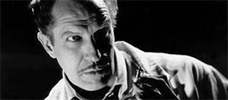
The Tingler
1959 -
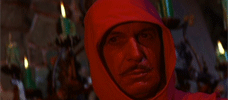
The Masque of the Red Death
1964 -
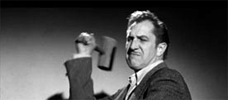
The Last Man on Earth
1964 -
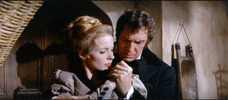
The Tomb of Ligeia
1964 -
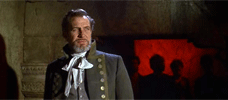
War-Gods of the Deep
1965 -
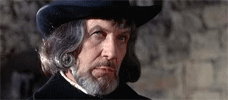
Witchfinder General
1968 -
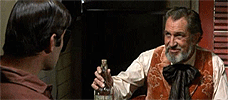
More Dead Than Alive
1969 -
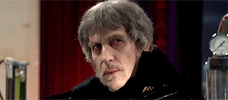
The Abominable Dr. Phibes
1971 -
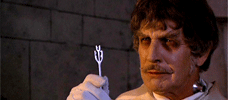
Dr. Phibes Rises Again!
1972 -
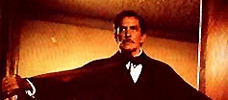
Theatre of Blood
1973
We don’t do comments anymore, but you may contact us here or find us on Twitter or Facebook.



